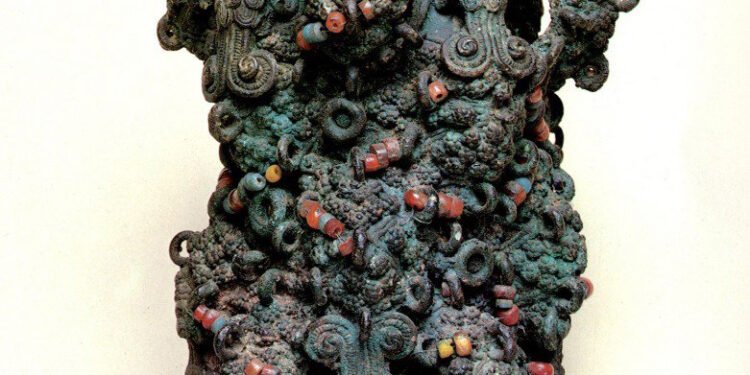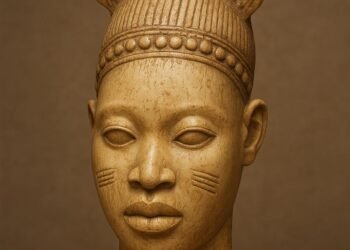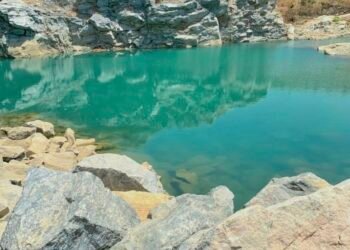Arochukwu Long Juju Shrine: Unveiling Ancient Traditions
In the Arochukwu area of Abia State, Nigeria, there is the Arochukwu Long Juju Shrine, which is historically significant.
Ethereally known in the past as Ibini Ukpabi, or the Drum of the Creator God, this shrine was not just a religious symbol; it was the supreme judicial oracle of pre-colonial Eastern Nigeria.
Created by the Aro people in the 17th century, its deep impact shaped politics, commerce, and social order for centuries.
It is now a robust, if complex, document of an advanced indigenous jurisprudence, its legacy bound up with concerns of religious power and the ignoble era of the transatlantic slave trade.
Table of Contents
Arochukwu Long Juju Shrine History
The beginnings of the Ibini Ukpabi oracle date back to an era of giant transformations.
While European ships were becoming familiar with the West African coast, societies from more interior areas, such as the Aro people, adapted to this new reality with remarkable versatility.
They did not merely build a shrine; they established a sound institution which served an urgent need for justice and order.
Read Also: Sukur Stone: A Symbol of Ancient Craftmanship
By declaring themselves the Chosen Interpreters of the Creator God, Chukwu, the Aro appealed to spiritual power to attempt to establish a vast network of influence known as the Aro Confederacy.
It was a time when political and religious had been synonymous. Individuals from distant villages would journey far to Arochukwu, bearing with them their most grievous grievances, charges of murder, witchcraft, and treason, before the oracle, in the hope that its judgment would be final and irrevocable.
This indestructible faith in its religious connection evolved into the basis of its authority and longevity.
How the Oracle Functioned as Judge
The Long Juju Shrine was the last of the day’s courts. It claimed no authority to be based upon written law but upon an unwavering, unshakable belief that it was the repository of a sacred power.
The guilty were said to have been consumed by the god, a penalty well designed to keep society in order and protect an ascetic social hierarchy throughout the area.
This immense judicial power was the pillar of the Aro Confederacy’s authority, and its jurisdiction went largely unchecked for centuries.
Others came for days, bearing their greatest grudges: bitter land disputes, manslaughter charges, or accusations of witchcraft, to this hallowed ground for a final verdict.
The ritual was a sombre procession of suffering and agony through the hidden passages and grottos of the temple, meant to chastise any petitioner. An oracle’s judgment was absolute; there was no appeal to any court of appeals.
Architectural Features of the Shrine
The physical design of the Long Juju Shrine is a masterpiece of both natural and man-made design. Centred around a cave temple compound, the site’s architecture is in the form of a six-foot gulley that serves as the main entrance, spilling into a dark, cavernous inner space.
Among the most significant aspects of the compound is the Throne of Judgment, a room that was given the status of the “Holy of Holies” and in which it is said that the gods’ presence dwelt.
A nearby waterfall offered a constant rumble, which was said to be the voice of Ibini Ukpabi, a prophetic spirit. Some other points of interest are the Hill of Rags, where the guilty were compelled to remove their clothes before vanishing into tunnels, and the Red River, which was offered a red dye to represent the death of the guilty.
Read Also: Aso Rock: The Heart of Nigeria’s Scenic Beauty
These features were designed to create an air of respect and terror, reclaiming the divine power of the oracle.
Slave Trade Connection
Arguably, the most controversial of the Long Juju Shrine’s features is its alleged connection to the transatlantic slave trade.
Historical accounts show that the majority of the people cursed by the oracle were not murdered but blindfolded and conveyed through underground passages to harbours like Calabar. They would then be sold to European merchants who traded slaves. This would have generated a significant amount of wealth for the Aro priesthood and solidified their economic position if it had occurred.
However, the prehistorical Aro perceptions strongly contradict this narrative, arguing that the legal function of the shrine was distinct from the commercial slave economy.
Colonial Ruin and Legacy
When the Brits rolled into Nigeria, having their whole colonial coup d’état, the Long Juju Shrine? That was effectively the Avengers’ headquarters for anyone who wanted to fight British control.
During the Anglo-Aro War of about 1901-1902, the British flat-out destroyed the shrine entirely on purpose, as an aside, hoping that it would break the morale of the Aro Confederacy. Joke’s on them, though.
Even after the shrine was destroyed, Ibini Ukpabi still had wild influence. People continued to hold onto their faith and kept the culture alive, a testament to the vitality of tradition.
The shrine still stands as a symbol of Aro identity, and the Eze Aro, or traditional king, remains important to the Aro people throughout Nigeria. This illustrates the enduring influence of local culture in the face of colonial intervention.
Modern-day Relevance and Tourism
Nowadays, the Long Juju Shrine is not only renowned for its history but also for its tourism. In 2007, the shrine was added to Nigeria’s tentative UNESCO World Heritage list, which actually gave it international recognition of its significance.
The cave system, with its tunnels and judgment chambers, remains accessible to the public, offering a dark and insightful glimpse into the past.
The location has some serious disadvantages; the first of which is the undeveloped infrastructure and roads that can greatly hamper access. That said, there is a strong push to promote the shrine as a cultural tourist destination and to specifically market it to the African diaspora, who would be interested in rediscovering their cultural heritage.
Mysteries and Ongoing Controversies
The inner workings of the Long Juju Shrine are not known. Traditionalists believe that the oracle’s methods are a secret revealed by God.
This confidentiality has stirred centuries of arguments between historians and researchers, primarily about the scope of the role that the shrine played in the slave trade.
While other people believe that the oracle was used for economic purposes, others people firmly believe that it was used for religious and judicial purposes.
Such discussions reflect the broader intricacies of pre-colonial African history, in which power and spirituality were often interdependent.
Cultural and Religious Significance of the Long Juju Shrine
To the Aro, the Long Juju Shrine is not just a piece of history. It reminds them, indeed, of what it means to be human beings. It was lost in colonial times, yes, but not entirely. It had remains that endured.
The twin taboo of shrine visiting, for example, endures; a tawdry endurance of orthodox taboo.
Rituals and ceremonies carried out annually at Ibini Ukpabi continue to shape Aro life. The ceremonies actually strengthen group relations and validate the significance of the oracle for everyone. That is why the shrine remains at the centre of religious and community social life.
Challenges and Future Opportunities
The future of the Long Juju Shrine will depend on surmounting several challenges.
Enabling improved infrastructure, such as rehabilitating access roads to Arochukwu, will be sought in order to facilitate tourist access to the site.
Additionally, the protection of the physical site for the shrine and the production of educational materials will guarantee an appreciation of its history among visitors.
There is a balance to be struck between the narration of the shrine’s history, encompassing both its religious significance and contentious past.
Read Also: Uncover the Mysteries of Zuma Rock in Nigeria
Through concerted efforts, the site would become a leading heritage tourism destination, driving local economic development and enhancing knowledge of Nigeria’s complex history.
Long Juju Shrine in Arochukwu is a testament to the sagacity and sophistication of pre-colonial African politics.
Instead of a cult centre, the shrine was a religious and juridical complex, operating syncretically between religion and social administration. Such a function situated it at the fulcrum of the Aro Confederacy’s political and social system.
Far as well-nigh impossible to overlook is the shrine’s association with the transatlantic slave trade, the shrine’s negative aspect complicating any reductive cultural success story.
It is only today, though, that a trip to the shrine provides an opportunity to see these rich tales in all their nuance, demonstrating how religious belief and human trade had so frequently intertwined in richly telling ways.
Continuing conservation work serves to strengthen the site’s continued relevance to the modern age, providing generations yet to come with an educational window into the dynamic and sometimes contentious history of Africa.
The shrine itself is not just a symbol of cultural determination but also a reflective site on the complexity of history.








